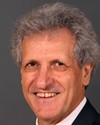I'd like to thank the committee for inviting AC Global Systems to be a witness at this session. We hope that the information I provide today will be useful to you.
AC Global Systems is a research and development company in the business of providing vehicle security and safety through GPS tracking and vehicle slowdown technology. We have a patent-pending product for the consumer and commercial transport market. It offers full fleet management and vehicle slowdown technology to the commercial sector, and it offers stolen vehicle recovery with vehicle slowdown technology to the consumer market.
On page 2 of my brief, you will see a graphic that demonstrates how AC Global Systems’ vehicle slowdown technology will work in the real world. We also have a video demonstrating our technology that can be viewed on our website. I have provided the address at the end of my reference material.
Through our research, we have found that since 9/11, the Federal Motor Carrier Safety Administration of the U.S.A. has continually researched ways to improve safety, security, and efficiency in the trucking industry. Today I will give you an overview of a few reports that have been conducted to provide more information to the U.S. Transportation Security Administration on tracking systems, vehicle disabling technologies, vehicle shutdown technologies, and driver authentication technologies.
Large and small trucking companies that have adopted these kinds of technologies in their fleets were interviewed. They agreed that they provided peace of mind to their managers and made the drivers feel safe and secure, not to mention that there were monetary savings.
One trucking company interviewed mentioned a situation in which a truck carrying $5 million worth of pharmaceuticals had been stolen.
Another company that had adopted VST technology had a hijacking situation. The driver was able to send an alarm to dispatch and notify them that something was wrong. Once it was determined by law enforcement that the driver was not in danger, the vehicle was shut down, and it was recovered with the cargo intact. The savings were estimated to be $250,000.
In 2005 the United States Congress was deliberating legislation to encourage HAZMAT truck operators to equip their vehicles with tracking capability. The Transportation Security Administration awarded a grant to the University of Virginia to develop a recommended concept of operation and design for a national HAZMAT truck tracking system. Four teams, of 10 to 11 graduate students each, addressed this. Their reports contained a cost-benefit analysis and recommendations for system requirements for the deployment of a centralized HAZMAT trucking system for 2010.
In 2007, SAIC, a large research house in the U.S., was hired by the U.S. Department of Transportation and the FMCSA to write a report entitled “Vehicle Immobilizing Technologies: Best Practices for the Industry and Law Enforcement”. Twenty-eight commercial, off-the-shelf technologies were studied. Six of the companies were Canadian.
Field operational tests were conducted. They consisted of two parts. The first phase focused on vehicle shutdown technologies and on demonstrating shutdowns by dispatch and law enforcement. It also demonstrated the use of geo-fencing, which is a virtual boundary on a geographical area. If a boundary is crossed, an event is triggered, such as deploying the vehicle slowdown technology on board. The second phase of this field operational test focused on vehicle disabling technologies and driver authentication technologies. Both phases of the testing were conducted on trucks and buses.
All the information they collected resulted in a best practices list for vehicle immobilizing technologies. The report presented a concept of operations for the use of vehicle shutdown technologies, providing an appropriate protocol for avoiding inadvertent activation and procedures to be followed before activation. It also provided a list of organizations that should be involved in coordination to ensure safe vehicle slowdown.
The report stated that the primary conclusion of the study was that the industry favours an approach that focuses on theft prevention.
Adoption of these advanced security measures also has insurance benefits for trucking companies that are not able to self-insure. An insurance company that was interviewed stated that the underwriters could take an aggressive approach rather than a conservative one in estimating risk for companies that have adopted these kinds of technologies.
In 2008, the same group, SAIC, was hired by the TSA to continue their research using the best practices criteria from the 2007 report. AC Global Systems, of Trail, B.C., was part of this study and gave a field operational test.
This report is classified SS1 and is not available to the general public. It was our understanding this more in-depth report was being done to further push ahead the arrangements of a centralized tracking centre in the U.S. for all HAZMAT vehicles. We were told the money to create this kind of centralized tracking system had been set aside by the U.S. government.
It has now been announced that in the fiscal year 2009, the trucking security program has made available $7.7 million for implementing security improvement measures deemed valuable by the Department of Homeland Security, the primary focus being on the purchase, installation, and enhancement of equipment and systems related to tractor and trailer tracking systems. Additionally, the tracking security program will provide funding to develop a system for DHS to monitor, collect, and analyze tracking information and develop plans to improve the effectiveness of transportation and distribution of supplies and commodities during catastrophic events such as Hurricane Katrina.
The U.S. economic stimulus act of 2008 has been extended into 2009 and provides tax incentives to purchase vehicle shutdown and tracking technologies. Although it does not relate to HAZMAT, the committee may be interested to hear that GM has announced it will introduce a vehicle slowdown technology on more than one million 2009 GM vehicles in the U.S. and Canada. They hope this slowdown technology will prevent a vehicle from being an instrument of harm. OnStar Slowdown will help take high-speed pursuits out of the equation, as well as the probability that a stolen vehicle will be crashed during a chase.
Most of the movement of goods from Canada to the United States is by truck. If the trucking industry intends to continue to drive throughout the United States, they will be forced to install these technologies. If these kinds of forward-thinking security measures are taken in the trucking industry, lives will be saved and damage like that caused in the Oklahoma City bombing may be preventable.
The Olympic effort in Vancouver would be well served by implementing cost-effective vehicle shutdown technology and GPS tracking on all trucks working on Olympic venues. This could easily reduce if not eliminate the nightmarish threat of terrorists using a vehicle as a weapon.
In conclusion, AC Global Systems would like to make the following recommendations to the committee: that Canada develop a parallel tracking system for HAZMAT shipments like that proposed by the U.S. government. It is imperative that the Canadian government develop transportation safety and security regulations that will harmonize with U.S. regulations including the mandating of vehicle shutdown technology and driver authentication technology.
There must be an incentive package for the Canadian trucking industry that is similar in monetary value to the U.S. incentive package. Canadians can compete with their American colleagues if there is a level playing field. The American trucking industry has had financial incentives in place for two years, so Canada must act quickly to bridge the gap. There should be a grant structure for research and development companies that are Canadian-based to pursue this vital safety and security technology. Tens of millions of dollars have been spent in the U.S. researching transportation safety and security since 2001.
On behalf of AC Global Systems, I would like to thank the committee for allowing me the opportunity to testify before you on this vitally important subject.
I'll be happy to answer any questions you may have.










